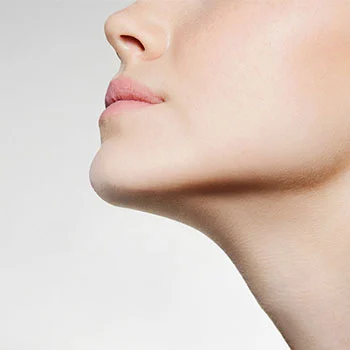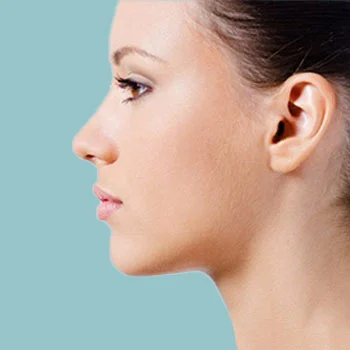What is a square jaw?
A square jaw refers to a facial feature characterized by a prominent, angular jawline. It is often associated with a strong and defined jaw structure. The square jawline is typically more prevalent in individuals with a higher level of testosterone, which can contribute to a more masculine appearance. However, it is important to note that jaw shape can vary greatly among individuals and is influenced by a combination of genetic factors, facial bone structure, and muscle development.
What is square jaw reduction?
Square jaw reduction, also known as jaw reduction, jaw contouring, or jawline slimming, is a cosmetic procedure aimed at reshaping and reducing the prominence of a square-shaped jawline. This procedure is typically performed for aesthetic purposes, to achieve a more balanced and feminine facial appearance.
Square jaw reduction can be achieved through both surgical and non-surgical methods. Surgical options include jawbone shaving or jawbone contouring, which involves removing a portion of the jawbone to create a narrower jawline. This procedure is usually carried out under general anesthesia and may require a recovery period.
Non-surgical options for square jaw reduction include muscle-relaxing injections, such as botulinum toxin (Botox), which can be administered into the masseter muscles. These injections weaken the masseter muscles, responsible for jaw clenching and teeth grinding, causing them to gradually reduce in size and soften the jawline.
What are the reasons people have square jaw reduction surgery?
People choose to undergo square jaw reduction surgery for various reasons, including:
- Aesthetic concerns: Many individuals with a square jawline may feel that it gives their face a more masculine or angular appearance. They may desire a softer, more feminine jawline, and opt for square jaw reduction to achieve a more balanced facial aesthetic.
- Facial harmony: Some people undergo square jaw reduction to enhance overall facial harmony. They may feel that a square jawline is not in proportion with other facial features, such as the cheeks, nose, or lips. By reshaping the jawline, they aim to create a more balanced and pleasing facial contour.
- Self-confidence: For individuals who feel self-conscious about their square jawline, square jaw reduction surgery can help improve their self-esteem and boost their confidence. By achieving their desired jawline shape, they may feel more comfortable and satisfied with their appearance.
- Functional concerns: In some cases, a square jawline may be associated with excessive jaw muscle activity, such as teeth grinding or jaw clenching (bruxism). This can lead to jaw pain, headaches, and other discomfort. Square jaw reduction surgery, particularly through muscle-relaxing injections, can help alleviate these symptoms and improve jaw function.
It is important to note that the decision to undergo square jaw reduction surgery is a personal one, and individuals should carefully consider their motivations, consult with a qualified cosmetic surgeon, and have realistic expectations regarding the outcome of the procedure.
How is square jaw reduction surgery performed?
Square jaw reduction surgery is typically performed by a qualified cosmetic surgeon or maxillofacial surgeon. The specific technique used can vary depending on the individual's anatomy and desired outcome. Here is an overview of the surgical process:
- Consultation and evaluation: The first step is to have a consultation with the surgeon. They will assess your facial structure, discuss your goals, and determine if you are a suitable candidate for square jaw reduction surgery. They may also use imaging technology to simulate the potential results.
- Anesthesia: Before the surgery begins, you will be given anesthesia to ensure you are comfortable and pain-free during the procedure. The type of anesthesia used can vary, and it is typically discussed during the preoperative consultation.
- Incisions: The surgeon will make incisions inside the mouth along the gum line or externally in inconspicuous locations, such as below the chin or along the jawline. The approach used will depend on the specific technique and the surgeon's preference.
- Jawbone reshaping: If the square jawline is primarily due to an enlarged jawbone, the surgeon will access the jawbone through the incisions. They will then use surgical tools to sculpt and reshape the bone to achieve a narrower jawline. The excess bone may be removed or shaved down to create a more desired contour.
- Muscle modification: In some cases, the surgeon may address hypertrophy (enlargement) of the masseter muscles, which contribute to a square jaw appearance. They may partially remove or weaken the masseter muscles to reduce their size and achieve a more slimmed jawline. This can be done through direct excision or by using botulinum toxin (Botox) injections to temporarily weaken the muscles.
- Closure: Once the desired reshaping and modifications are complete, the surgeon will close the incisions with sutures. They may use dissolvable sutures inside the mouth or removable sutures for external incisions.
- Recovery and follow-up: After the surgery, you will be given specific recovery instructions, including post-operative care, pain management, and dietary restrictions. It is important to follow these instructions for optimal healing. Follow-up appointments will be scheduled to monitor your progress and address any concerns.
It's essential to consult with a qualified surgeon to discuss the details of the procedure, potential risks, recovery timeline, and expected outcomes specific to your case. They will provide personalized guidance and address any questions or concerns you may have.
How to prepare for square jaw reduction surgery?
Preparing for square jaw reduction surgery involves several steps to ensure a smooth and successful procedure. Here are some general guidelines to help you prepare:
- Consultation with a surgeon: Schedule a consultation with a qualified cosmetic surgeon who specializes in square jaw reduction. During this consultation, discuss your goals, medical history, and any concerns you may have. The surgeon will evaluate your facial structure, determine if you are a suitable candidate for the procedure, and provide personalized recommendations.
- Medical evaluation: Your surgeon may require a comprehensive medical evaluation before the surgery. This may involve blood tests, imaging studies, and other diagnostic tests to ensure you are in good health and can undergo the procedure safely.
- Stop smoking and avoid certain medications: If you are a smoker, it is advisable to quit smoking at least a few weeks before the surgery, as smoking can interfere with the healing process. Additionally, your surgeon may advise you to avoid certain medications, such as blood thinners, anti-inflammatory drugs, and herbal supplements, as they can increase the risk of bleeding and interfere with anesthesia. Follow your surgeon's instructions regarding medication use.
- Discuss current medications: Inform your surgeon about any prescription or over-the-counter medications you are currently taking, including supplements. They will advise you on which medications to continue or discontinue before the surgery.
- Arrange for transportation and support: Since square jaw reduction surgery is typically performed under anesthesia, you will need someone to drive you home after the procedure. Additionally, it may be helpful to have someone available to assist you during the initial recovery period.
- Follow preoperative instructions: Your surgeon will provide you with specific preoperative instructions. These instructions may include fasting for a certain period before the surgery, avoiding food or drink for a specific time frame, and proper hygiene protocols. It is crucial to follow these instructions closely to ensure a safe and successful surgery.
- Prepare your recovery space: Before the surgery, create a comfortable recovery space at home. This may include preparing soft foods, stocking up on necessary supplies, and ensuring a clean and restful environment for your recovery.
- Arrange time off: Plan for an adequate recovery period and arrange time off from work or other responsibilities to allow yourself enough time to heal and rest comfortably.
Remember to communicate openly with your surgeon, ask any questions you may have, and follow their instructions closely. This will help ensure a smooth and successful surgical experience.
Square jaw reduction surgery recovery
The recovery process after square jaw reduction surgery can vary depending on the individual and the specific surgical techniques used. Here are some general guidelines on what to expect during the recovery period:
- Immediate post-operative period: After the surgery, you will be taken to a recovery area where you will be monitored until you are awake and stable. Your surgeon may recommend staying at the hospital or surgical facility for a few hours or overnight for observation.
- Swelling and bruising: Swelling and bruising in the jaw and lower face are common after square jaw reduction surgery. This can vary in severity but typically peaks within the first few days and gradually subsides over the following weeks. Applying cold compresses and keeping your head elevated can help reduce swelling.
- Pain management: Your surgeon will prescribe pain medications or recommend over-the-counter pain relievers to manage any discomfort during the initial recovery period. Follow their instructions regarding medication use and never exceed the recommended dosage.
- Diet and eating: Your surgeon will provide specific instructions regarding your diet during the recovery period. Initially, you may be advised to stick to a soft or liquid diet to avoid placing excessive stress on the jaw. As you heal, you can gradually reintroduce solid foods based on your surgeon's guidance.
- Oral hygiene: Proper oral hygiene is crucial during the recovery period. Your surgeon will provide instructions on how to clean your mouth, including gentle brushing and rinsing with a prescribed mouthwash. It is important to follow these instructions to minimize the risk of infection.
- Activity and rest: It is essential to balance rest and light activity during the recovery period. While it is important to get adequate rest, gentle movement and light activities can help promote blood circulation and aid in the healing process. Avoid strenuous activities and exercise for the duration advised by your surgeon.
- Follow-up appointments: Your surgeon will schedule follow-up appointments to monitor your progress and remove any stitches if necessary. Attend these appointments as scheduled and communicate any concerns or issues you may be experiencing.
- Healing timeline: The complete recovery period after square jaw reduction surgery can vary, but most individuals can expect to see significant improvement within a few weeks. However, it may take several months for the final results to fully manifest as swelling subsides and the tissues settle into their new shape.
It is important to note that everyone's recovery experience may differ, and it is crucial to follow your surgeon's specific post-operative instructions. If you have any concerns or experience severe pain, excessive swelling, or other unusual symptoms, contact your surgeon promptly for guidance and evaluation.
Risks and complications of square jaw reduction surgery
Square jaw reduction surgery, like any surgical procedure, carries certain risks and potential complications. It is important to be aware of these before making an informed decision. Some of the potential risks and complications associated with square jaw reduction surgery include:
- Infection: There is a risk of infection at the surgical site. The surgeon will take precautions to minimize this risk, such as using sterile techniques and prescribing antibiotics. However, infections can still occur and may require further treatment.
- Bleeding: Excessive bleeding during or after the surgery is possible. The surgeon will take steps to control bleeding during the procedure, but in some cases, additional intervention may be necessary to stop the bleeding.
- Nerve damage: The surgery involves working near the nerves in the jaw area. While rare, there is a risk of nerve injury, which can result in temporary or permanent numbness, tingling, or altered sensation in the lower face or chin.
- Swelling and bruising: Swelling and bruising are common after square jaw reduction surgery and typically subside within a few weeks. However, in some cases, excessive swelling or bruising may occur.
- Asymmetry: There is a possibility of achieving asymmetrical results, where one side of the jawline appears different from the other. This can be addressed through revision surgery if necessary.
- Unsatisfactory aesthetic outcome: While efforts are made to achieve the desired aesthetic result, individual healing and response to the surgery can vary. In some cases, patients may not be completely satisfied with the final aesthetic outcome.
- Scarring: Incisions are made during the surgery, which can result in visible scarring. However, the surgeon will make efforts to minimize scarring and may use techniques to place incisions in inconspicuous areas.
- Allergic reactions: Some individuals may have an allergic reaction to anesthesia, medications, or materials used during the surgery. It is important to disclose any known allergies to the surgical team before the procedure.
- Dissatisfaction with results: It is important to have realistic expectations and communicate your goals clearly with your surgeon. While many patients are satisfied with the results of square jaw reduction surgery, there is a possibility of not achieving the desired outcome.
It is crucial to discuss these potential risks and complications with your surgeon during the consultation process. They will evaluate your individual case, explain the risks specific to you, and provide guidance on how to minimize these risks. By choosing a qualified and experienced surgeon, following pre-and post-operative instructions, and maintaining open communication, you can help minimize the occurrence of complications and enhance the chances of a successful outcome
How much does square jaw reduction surgery cost?
The cost of square jaw reduction surgery can vary significantly depending on various factors, including the surgeon's expertise, location, facility fees, anesthesia fees, pre-operative tests, and post-operative care. It is essential to note that the following information provides a general idea and that specific costs can only be determined after a consultation with a qualified surgeon.
On average, the cost of square jaw reduction surgery can range from $3,000 to $10,000 or more. This estimate typically includes the surgeon's fees, anesthesia fees, and facility fees. However, it may not include expenses such as pre-operative consultations, medical tests, medications, post-operative garments, and follow-up appointments. These additional costs can vary depending on the individual's needs and the specific requirements of the procedure.
The best approach is to consult with a board-certified cosmetic surgeon who specializes in square jaw reduction surgery. During the consultation, they can evaluate your specific case, discuss your goals, and provide a personalized cost estimate based on your unique circumstances.
It is important to prioritize the quality and expertise of the surgeon over cost alone. Be sure to choose a reputable surgeon with a proven track record of successful procedures and patient satisfaction. Additionally, check if the cost includes any potential revision surgeries or complications that may arise.
Moreover, it is advisable to inquire with your chosen surgeon about any available financing options, as some clinics may offer payment plans to help make the procedure more affordable.
Keep in mind that the cost of surgery should not be the sole determining factor in your decision-making process. The expertise and reputation of the surgeon, along with the safety and quality of the procedure, should be prioritized to ensure the best possible outcome.
Square jaw reduction vs V-line surgery: are they the same?
Square jaw reduction and V-line surgery are related procedures but are not exactly the same.
Square jaw reduction specifically focuses on reshaping and reducing the prominence of a square-shaped jawline. It involves modifying the jawbone or reducing the size of the masseter muscles to achieve a more tapered and feminine jawline.
On the other hand, V-line surgery is a broader term that encompasses various procedures aimed at achieving a V-shaped facial contour. It typically involves not only jawline reduction but also other modifications to the chin and jaw area to create a more slender and defined lower face. V-line surgery may include procedures such as square jaw reduction, chin reduction or augmentation, and mandible angle reduction.
While square jaw reduction is specifically targeted at addressing a square jawline, V-line surgery encompasses a more comprehensive approach to reshape and refine the lower face for a V-shaped appearance.
FAQs
Can I get my square jaws corrected without surgery?
There are non-surgical options available for correcting square jaws. One common non-surgical approach is using injectable treatments like Botox or dermal fillers. These treatments can help relax the masseter muscles and create a more slender jawline without the need for surgery. However, the results achieved through non-surgical methods may be temporary and require ongoing maintenance treatments. It is best to consult with a qualified cosmetic professional to determine the most suitable approach for your specific case.
How long does a square jaw reduction surgery last?
On average, the surgery itself typically takes around 1 to 3 hours to complete. However, the overall duration may be longer when considering pre-operative preparations and post-operative care.
Does square jaw reduction surgery leave scars?
Square jaw reduction surgery may leave scars but the location and extent of the scars will depend on the specific surgical technique used. However, the surgeon will make efforts to minimize scarring and may place incisions in inconspicuous areas.




